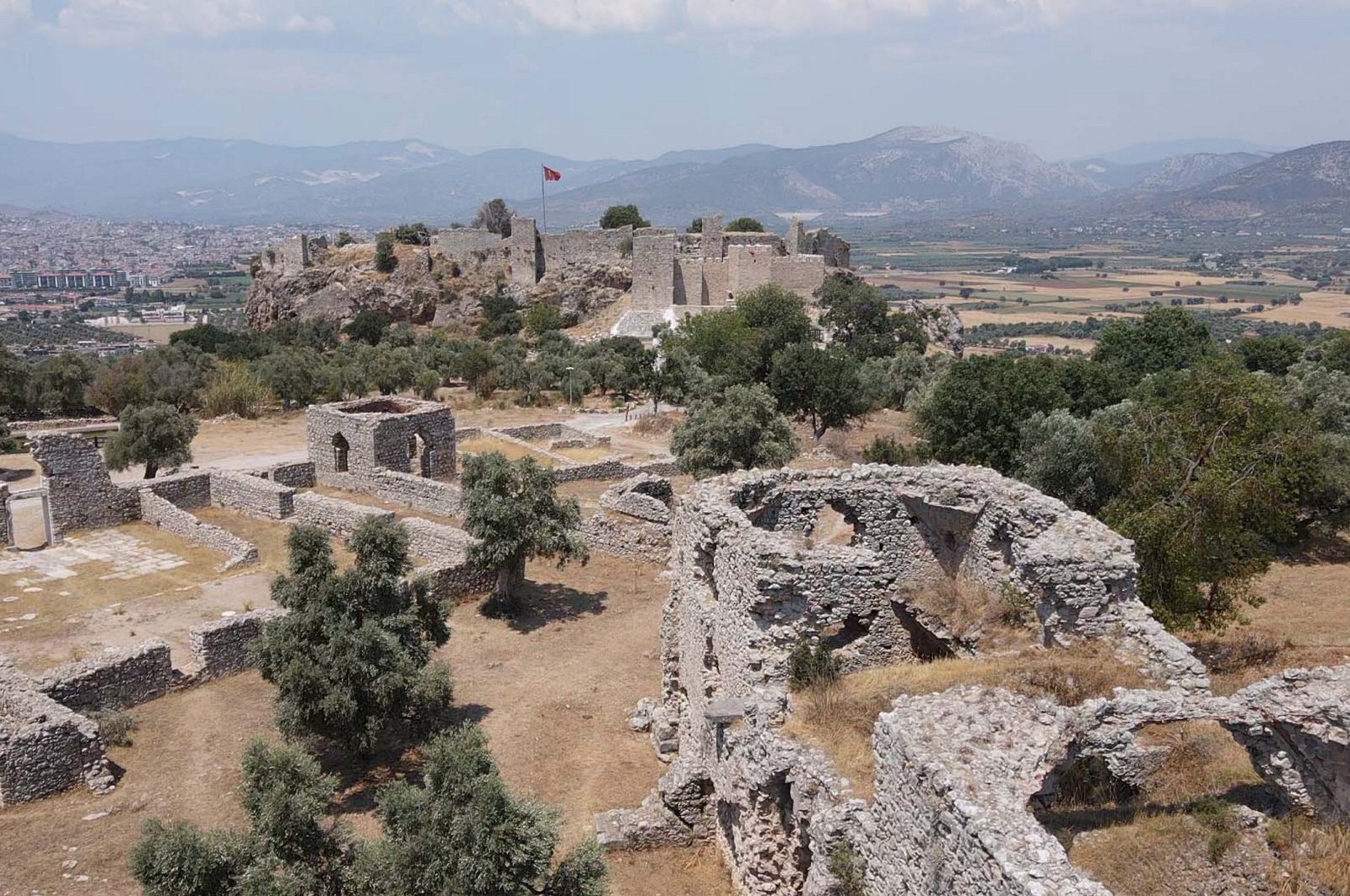
In the Milas district of Muğla in southwestern Türkiye, the castle walls and towers of the Beçin Ancient City, a site on the UNESCO World Heritage Tentative List and once the capital of the Menteşeoğulları Principality, are being restored to their former appearance through ongoing excavation and restoration efforts.
As one of the region’s most significant archaeological sites, Beçin Ancient City continues to reveal its historical treasures through year-round excavation work. The uncovered ruins shed light on the past, while the remaining historic structures are being restored for tourism.
Professor Kadir Pektaş, head of the Beçin Ancient City Excavation, told Anadolu Agency (AA) that the Menteşeoğulları chose Beçin as their capital. He noted that Beçin, with its significance in the Turkish-Islamic period and the tomb of its founder, Ahmet Gazi, remains one of the important centers of that era.
Pektaş highlighted that regular excavations have been conducted since the site was added to the UNESCO World Heritage Tentative List in 2012. Many artifacts have been uncovered, and surviving historic structures are being restored and prepared for tourism.
The ancient city’s history dates back to the second millennium B.C. but gained significant importance during the Menteşeoğulları Principality.
Pektaş mentioned that restoration work on the city walls, which began last year with an approved project, has continued this year. Specifically, the restoration of the towers at the entrance of the inner castle and part of the castle walls has been completed.
He also noted that excavation work at the cistern located at the inner castle entrance will be completed in the near future.
Pektaş emphasized that the inner castle, overlooking the Milas Plain, has been crucial in preventing the collapse of its walls. The restoration of the towers at the inner castle entrance, which posed a significant risk, has been completed, with plans to restore the other walls in stages.
"Once completed, the inner castle will showcase the splendor of its former days. Visitors will be able to see a site with an uninterrupted history from the Chalcolithic period to the 1950s. Currently, two towers and a section of the castle walls have been restored, with plans to restore eight more towers,” Pektaş said.
He also highlighted that excavation and restoration work for 2024 is ongoing, including cleaning work in the cemetery area and a review of the restoration project for the No. 1 tomb across from the inner castle by the conservation board.
Pektaş mentioned that a project is also being prepared for Üçgöz Hanı, awaiting approval. Once completed, restorations will begin, and additional restoration projects for Orhaniye Mosque and Seymenlik Zaviyesi will be prepared with funding from the Turkish Historical Society.
Historical sources indicate that the castle in the ancient city, located 5 kilometers (3.11 miles) from the district center on the Milas-Ören road, was built during the Byzantine period using stones from surrounding ancient structures. During the Menteşeoğulları era, the castle was renovated and utilized.
